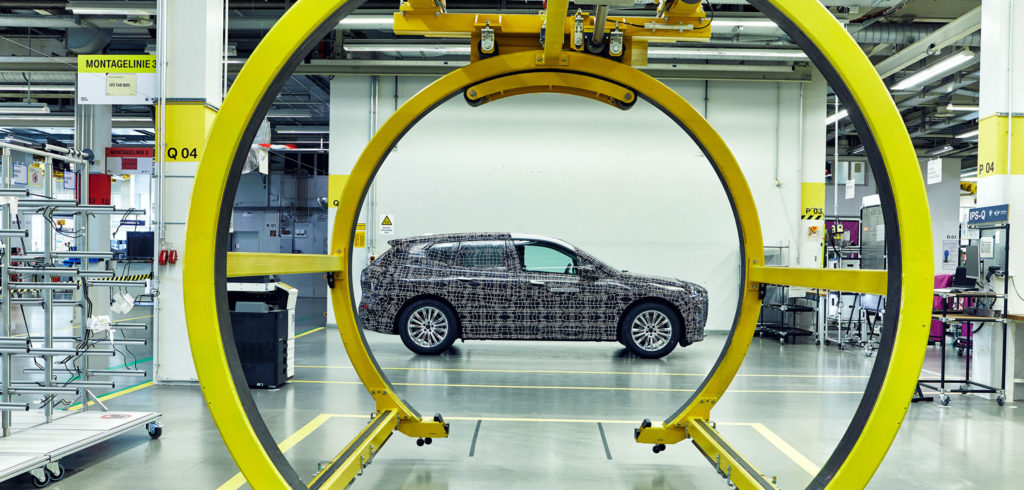BMW has offered an exclusive glimpse behind the scenes of its pilot plant in the heart of the company’s Research & Innovation Centre in Bavaria, where the company builds the iNext prototypes.
The iNext will be made on the same assembly line as the OEM’s combustion-powered and plug-in hybrid vehicles and will go into series production at the end of 2021.
Udo Hänle, head of production integration at the pilot plant, said, “Preparing a fully electric vehicle for series production is an exciting but challenging task. By the time of the official start of production, we will have built as many as 100 prototypes of the BMW iNext. Until then, at the pilot plant, we will use a range of new innovations to streamline and speed up our processes even further. We are also preparing our first production associates from the Dingolfing plant to work on the new product.”
The process steps for series production are being defined and matured at the pilot plant, where experts also validate all vehicle functions, including electric and automated driving functions, and sensors for the driver assistance systems. In addition, experts working on the BMW iNext are making use of brand-new digital tools for the very first time to support more intelligent, efficient operations.
The first few bodies-in-white are being assembled in the bodyshop. Once assembled, the bodies will undergo detailed checks by laser radar. This solution eliminates the need to place measurement points manually, as has been done until now. The new optical process also dramatically shortens the time required for measurements to be made.
Complete surfaces of body parts are examined using a high-resolution scanner located in a virtual measuring room. Data obtained here is automatically compared with the CAD model of the part, which means the required information is delivered much faster than conventional methodologies.
An augmented reality app radically speeds up the way bolts in the floor assembly are identified and compared with the CAD model, and makes cooperation between departments even more efficient.
BMW also uses computer tomography to test prototypes in the early stages of development. At the pilot plant, there is a special testing system featuring four closely coordinated robots that scan the vehicle to create x-rays. Moving around the outside, they face each other in two pairs and send the x-rays to their opposites. The data gathered is used to calculate a multilayered 3D image. This can be used to analyze the internals of the entire vehicle. Computer tomography enables new materials and bonding techniques to be examined in minute detail without vehicles having to be dismantled. Previously components had to be removed and taken apart. The system picks up objects as small as 100μm – approximately the width of a human hair.
Digitization is opening up new possibilities in production. Virtual models of workers are used to define assembly processes early on. Before the first prototypes are even made, the models enable BMW to assess if the workplace is ergonomic and offers easy access not only to the inside of the vehicle to bolt in rear axles or integrate charging sockets, for example, but also to the various parts that need fitting.


